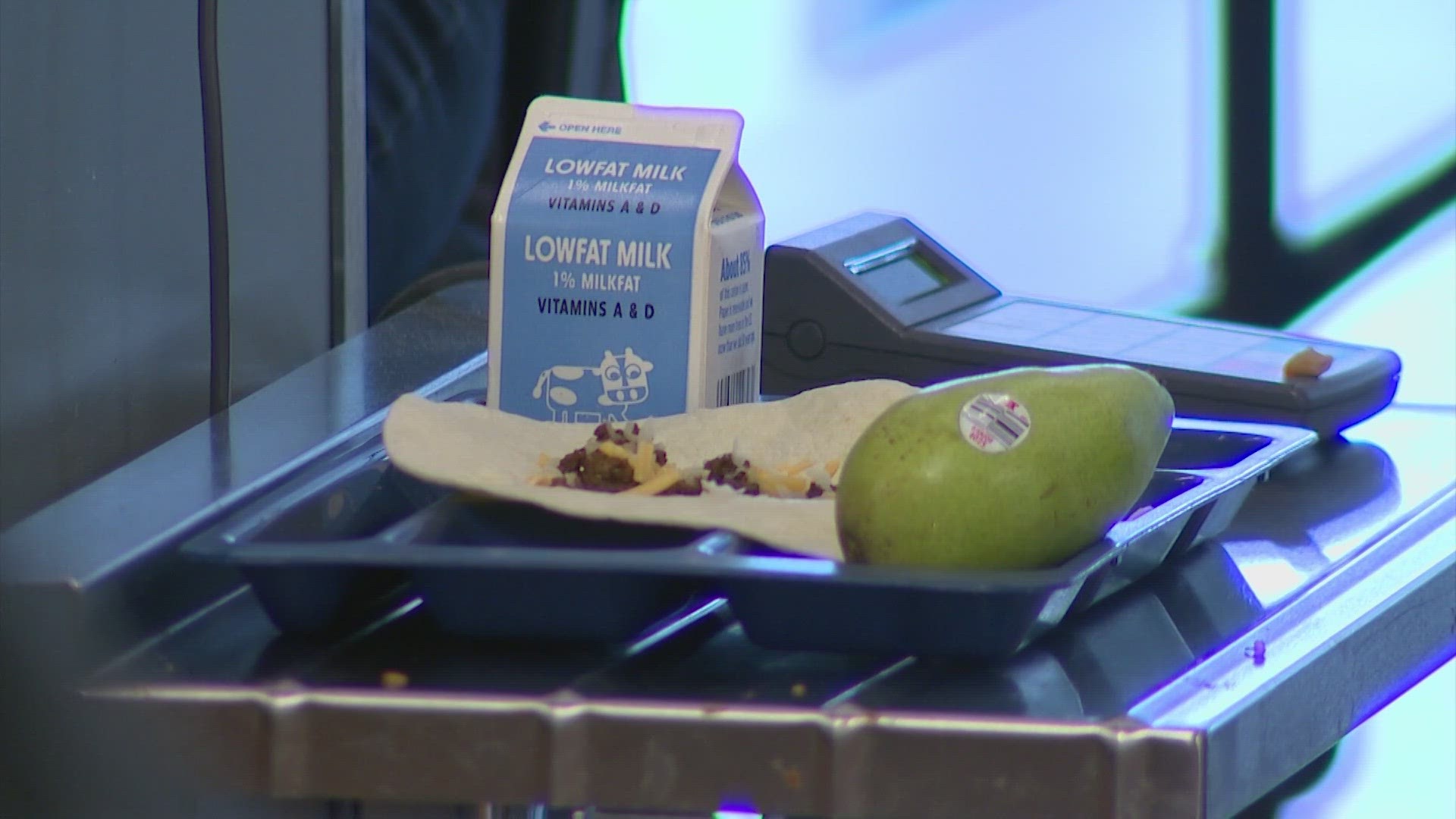PORT TOWNSEND, Wash. — For the first time, the United States Department of Agriculture (USDA) plans to limit how much added sugar can be served in school meals.
This is just one dietary guideline change proposed. Some changes will take effect this fall, while others will be rolled out over the next five years.
The proposed changes include: limiting added sugars, reducing sodium, limiting flavored milk, and adding more whole grains.
Some Washington school districts, like Port Townsend, already have the proposed guidelines in place. All three of their schools have gardens or orchards where students grow food that is used in their school meals.
"We're using a shovel to dig the dirt, and we're pulling up carrots,” said Evie Bosley, a fifth grader at Salish Coast Elementary School. “The cafeteria cooks with them for the meals that we have.”
“Once you get rolling with it, to do the scratch cooking and getting the fresh fruits and vegetables on the salad bar, it's pretty easy,” said Shannon Gray, food services director for the Port Townsend School District.
Gray said they started the garden last May and that last year it produced 4,000 pounds of food. Although the garden at Salish Coast Elementary is new, the school district made healthy changes far before that.
Gray said it has been seven years since the school kitchens switched to making meals from scratch. The district also made other healthy changes.
“We stopped serving chocolate milk, only on Wednesday afternoons they get chocolate milk,” Gray said. “And then being scratch cooking, you can control all your sodium and sugar levels.”
Soon other school districts will likely be required to follow suit. The USDA will soon announce changes to school meal dietary guidelines.
In 2023 the USDA received public comment on these proposed changes. The agency has not announced the exact standards for how the health changes will be regulated and measured. The department was deciding between different options it got feedback on.
“We know that a great nutritional foundation in childhood sets people up for lifelong health,” said Dr. Mollie Grow, who is a professor of pediatrics with UW Medicine and is on staff at Seattle Children’s Hospital.
Grow said there are resources and grants in Washington that schools can utilize to meet the proposed guidelines, which she said are necessary changes to ensure children’s health now and in the future.
“The sodium in particular has crept up in all of our foods and added sugars as well," Grow said. "Both of those are real culprits when it comes to heart disease and diabetes risk."
As districts across the country await updated guidance from the USDA for their school meals, students at Salish Coast hope other kids can soon have more fresh food too.
“If they have healthy meals, then they can get all the nutrients that their body needs,” Bosley said.
A decision about what exact changes will be made is expected soon by the USDA.
The changes would begin this fall and would roll out gradually over the next five years. The first thing to be implemented would be schools being required to use more whole grains.
The garden at Salish Coast Elementary was created using grants the district applied for, as well as people from the community donating and volunteering.

